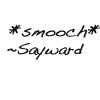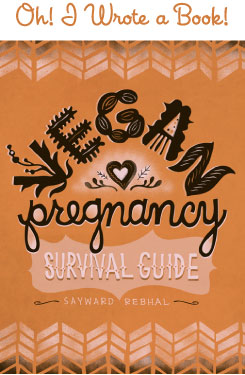In Interpreting A Label, Part I – Speaking The Language, I introduced the idea of learning to speak ‘Nutrition-ese’, and outlined the terms ‘organic’ and ‘natural’. Here in Part II, I conclude our lesson in label lingo. I do suggest that you read Part I before continuing with this post.
Chemical Free:
Oh, you haven’t seen that on a label? Yeah, that’s because it doesn’t exist. According to the USDA, “The term is not allowed to be used on a label”. Which is, I think, sort of worrisome.
Lipids:
There are all sorts of marketing phrases surrounding the fat content, or lack of fat, in your foods. They usually indicate various levels of chemical mutilation, and I discourage anyone from falling into the trap of eating these altered ‘foods’, which are always more processed and subsequently, less real. For one, they are so often dairy products and dairy derivatives, which we should all be avoiding anyway. But secondly, this can trap you in a deceptively unhealthy, ‘quick fix’ mentality. Fat is not bad! Eat real, whole foods full of healthy natural fats. The right fats are awesome, and essential too – so have at ‘em! But, just to be safe:
Fat Free: For the sake of simplicity the contents of foods, measured in grams, are rounded up or down to the nearest tenth. So, products labeled ‘fat free’ contain less than 0.5 grams of fat per serving.
99% Fat Free: This item contains more than 0.5, but less than 1.4, grams of fat per 100 grams of food.
Low Fat: This item contains up to 3.4 grams of fat per 100 grams of food.
Lean: This item contains less than 10 grams of fat (less than 4 grams of saturated fat), and less than 95 milligrams of cholesterol per serving. This label only applies to animal products.
Low Calorie: This item contains 40 calories or less per serving.
Cholesterol Free: Cholesterol is measured in milligrams, but the rounding principal still applies. In this case, this item contains less than 2.4 milligrams of cholesterol per serving.
Low Cholesterol: This item contains less than 20.4 milligrams of cholesterol per serving, as well as 2 grams or less of saturated fat per serving.
*Here’s where it starts to get really creepy . . . *
Reduced Fat: In this item, the fat has been ‘reduced’ by a minimum of 25%, as measured against a ‘comparable food’.
Light/Lite: In this item, the fat has been ‘reduced’ by a minimum of 50%, and the calories have been ‘reduced’ by a minimum of 33%, as measured against a ‘comparable food’.
Sodium:
A lot of people need to avoid salt due to any number of health reasons. As always, try to eat food that is as real (in it’s natural original state) and minimally processed as possible.
Sodium Free: Sodium is also measured in milligrams, and the rounding principal continues to apply. This item will contain less than 5.4 milligrams of sodium per serving.
Low Sodium: This item will contain less than 140.4 milligrams of sodium per serving.
Very Low Sodium: This item will contain less than 35.4 milligrams of sodium per serving.
Getting What You Need (?):
This is where enrichment and fortification come into play. You see, when food (say, wheat) is refined (say, to make flour), the vast majority of the beneficial vitamins and minerals are lost along the way. So even though you are eating wheat bread, you are not getting the same nutrients as you would from eating real wheat berries. This is an over-simplified example that is just meant to illustrate the importance of eating whole foods. When the foods are processed they lose their nutritional value, so sometimes manufacturers will try to put those nutrients back in. Some times they try to put in ‘nutrients’ that weren’t even there in the first place. To which I say: Why not just eat a nice wide variety of food that hasn’t been screwed with? But I digress.
Enriched: Items that have been enriched have had their original nutrients returned to them. For each kind of product (like flour) there are specific levels of vitamins and minerals that must be added in order to qualify as ‘enriched’.
Fortified: Items that have been fortified have had their original nutrients returned to them, and then additional supplements have been included. These extraneous elements are either added to products that did not originally have them at all, or else are added in quantities higher than naturally occurred.
Good Source: This item contains at least 10% of the ‘daily recommended’ value for the indicated vitamin, mineral, fiber, or protein.
Excellent Source/High In: This item contains at least 20% of the ‘daily recommended’ value for the indicated vitamin, mineral, fiber, or protein.
So that’s that, your crash course in label interpretation. Hopefully, at this point you’re feeling bilingual and ready to tackle the supermarket like a native ‘Nutrition-er’. But, just in case you think of anything I missed, please feel free to ask in the comments and I shall do my best to track down an answer!
. . . To Be Concluded . . .

-
Co
-
Meghan



